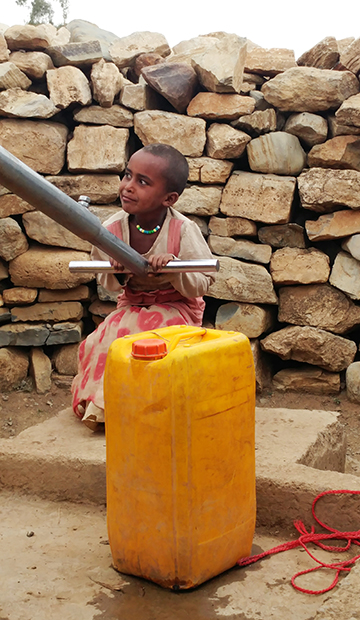
Grace Jackson is interning with Water to Thrive this summer, another in a good line of Valparaiso interns who have contributed much to Water to Thrive’s culture and knowledge base. She is traveling with W2T founder Dick Moeller on his tenth anniversary trip to assess projects from our first decade of service.
I am the only woman in our very small but energetic Ethiopia travel group of three which means that there is a chance I may be the only woman when we pair up with our in country partners to visit water project sites. This was the case on the first day, and I found myself followed by a band of young girls as I walked a bit away from the rest of the group. It made me realize the unique position that creates to see the girls and women of the community who tend to be the ones involved in collection and transportation of thee water but who also tend to be more timid when we visit with the community.
On Wednesday and Thursday of this week, we saw some awesome examples of the women involved in water projects from implementation, to community involvement, to collection.
All of the projects visited on Wednesday, June 6 were completed in 2012. We began the day by visiting Ado Egam, a shallow borehole project. Here we met Meron, age 6, who helps her mom pump water at the well every day and pumped water with more energy than anyone else I have seen.

This community also has a woman appointed as a treasurer. Water committees are made up of six or eight people, at least half of whom are encouraged to be women because they are the primary water collectors. This village also had a woman appointed from the water committee as treasurer, she is pictured below holding the book for the committee’s bank account.

Afterwards we visited two projects located a short distance from one another across a floodbank. The first was a shallow borehole site, Adi Meskelo. One thing that strikes me at many of the projects, and especially this one, is when the community talks about how the children, and especially the girls, are able to go to school because they don’t have to spend many hours of the day walking to a water source.
The second project was Kidana Miharet, a rehabilitation project on a hand dug well. The rehabilitation involved digging the well deeper, and replacing the pump. Seeing rehabilitation projects are a great reminder of how important it is to have communities invest in the water projects and how important the work of our partners and hydrogeologists are for site selection and depth determination.

Speaking of hydrogelogists, on Thursday morning, we met Genet, a hydrogeologist with REST (Relief Society of Tigray). You can read more about her on the Water to Thrive Facebook page. Genet and I were able to bond over the similarities in our technical educations and interest in hydrology. Genet was helpful in teaching me about Ethiopian customs, the land of Tigray, and helping me to not slip on terrain with which she was far more familiar.
On Thursday, we visited Msqual, the site of another shallow borehole project that was comoleted in 2016. It was apparent how involved and invested the community is in the project. We watched the women of the water committee pump water.
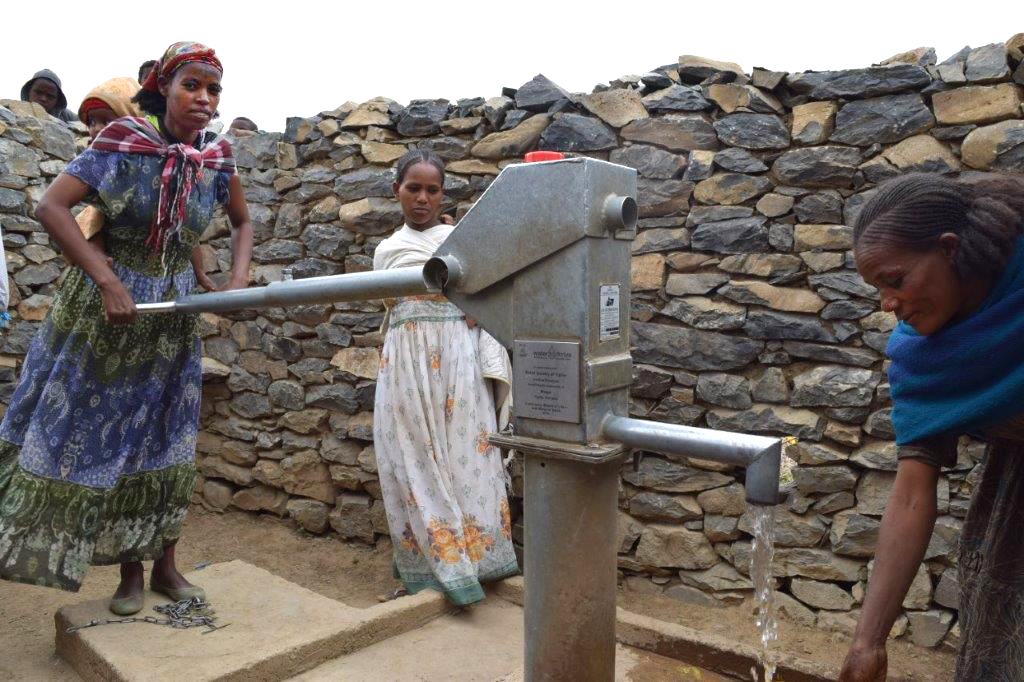
Tsige Gebre is pumping with her youngest of four children, Eyerusalem, on her back. Behre Abebe, pictured in the foreground, has five children.
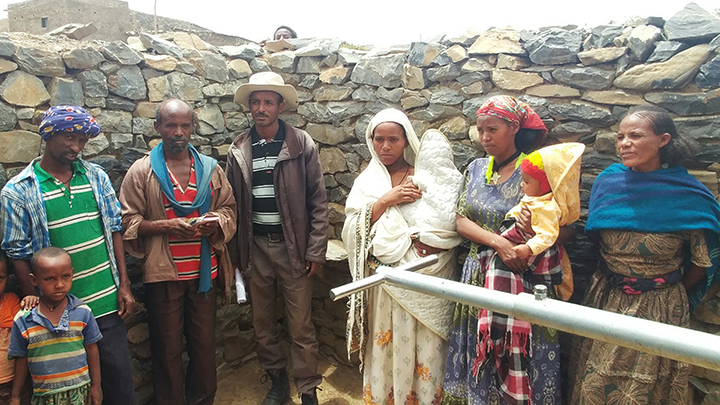
The water technician for the area was also present at this site visit. She works to make sure that 22 projects in the area are maintained and meets with the water committee biweekly to discuss any concerns with the well. We were then invited to take part in a coffee ceremony, and it was a great opportunity to talk, dance, and celebrate with members of the community.
-Grace

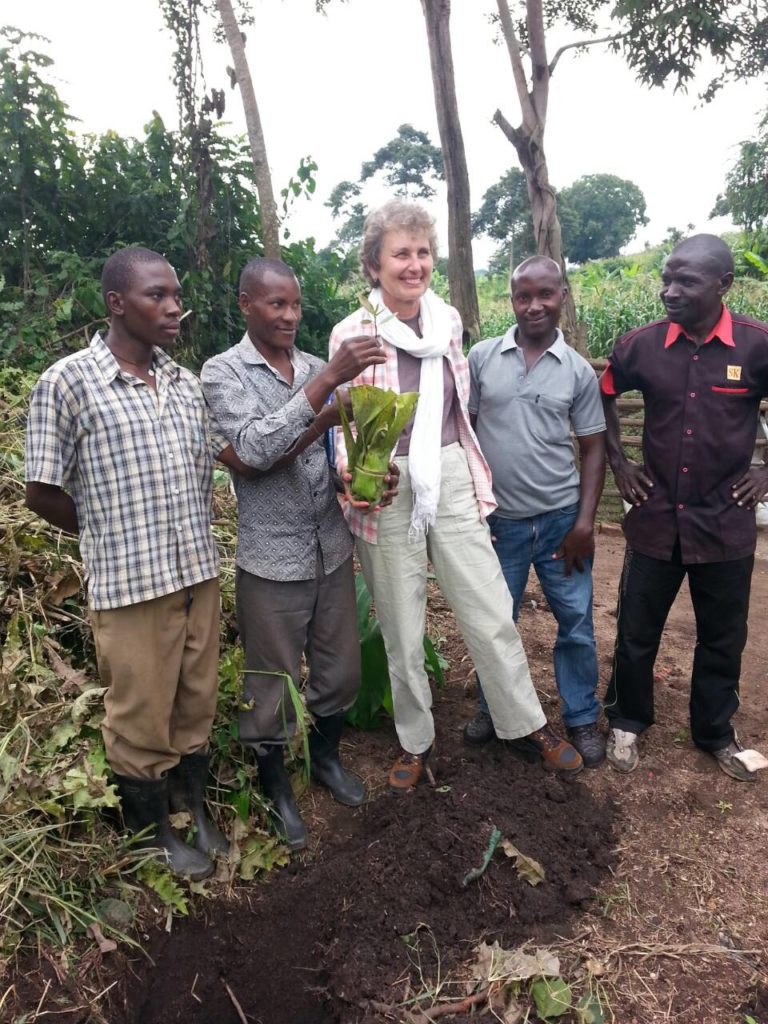
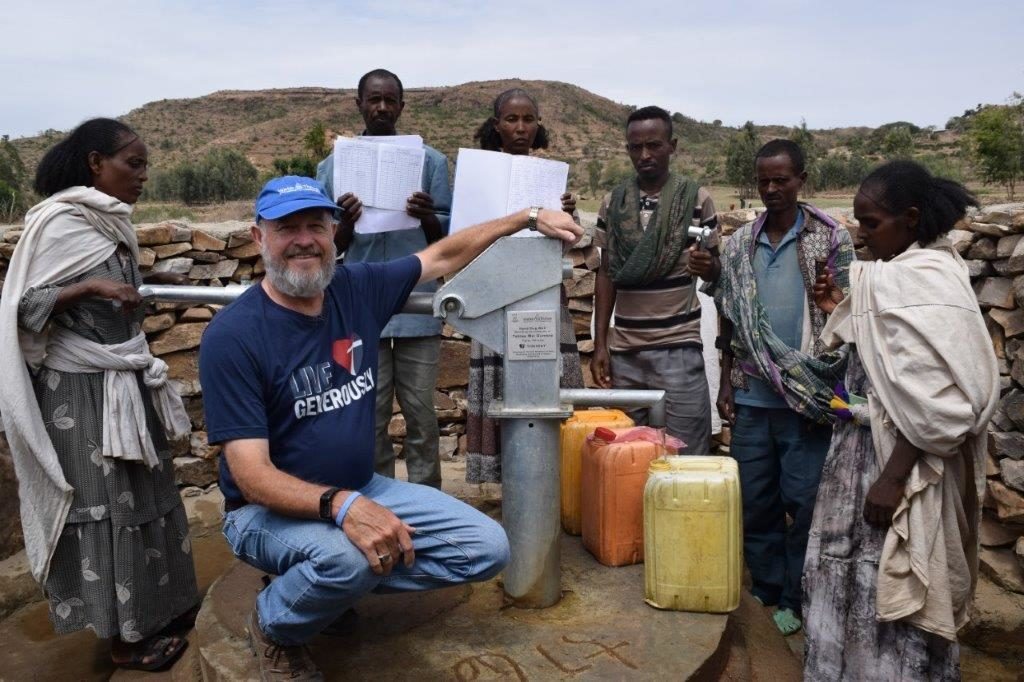
About The Author: Water to Thrive
More posts by Water to Thrive